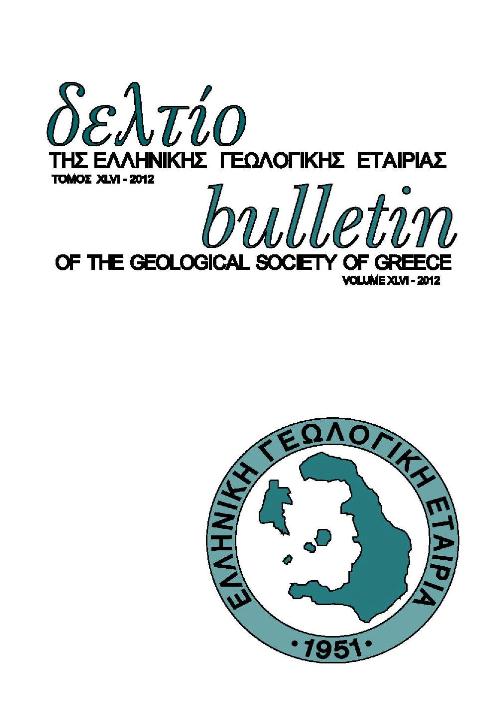PALAEOSEISMOLOGICAL ANALYSIS OF THE EAST GIOUCHTAS FAULT, HERAKLION BASIN, CRETE (PRELIMENARY RESULTS)

Abstract
A paleoseismological analysis has been performed at the East Giouchtas Fault. This fault dips to the east and represents a pure normal fault. The East Giouchtas Fault forms an intrabasinal high in the Heraklion basin with its conjugate fault the West Giouchtas Fault. A natural surface has been prepared and logged in detail in order to detect the most significant parameters related to the ground shaking impact on the area. Investigating past earthquakes characteristics attributed to the East Giouchtas Fault and through sample dating we conclude that the studied fault is related to at least four strong events of 6.4 magnitude. The fault is also characterized by 20-40 cm tectonosedimentatry displacements and slip rates of 0.25 mm/yr. Thus, the proximity of the fault to the highly populated Heraklion city and Minoan Knossos monument urges the need for an adequate hazard assessment of the area.
Article Details
- How to Cite
-
Zygouri, V., Koukouvelas, I., & Ganas, A. (2016). PALAEOSEISMOLOGICAL ANALYSIS OF THE EAST GIOUCHTAS FAULT, HERAKLION BASIN, CRETE (PRELIMENARY RESULTS). Bulletin of the Geological Society of Greece, 50(1), 563–571. https://doi.org/10.12681/bgsg.11756
- Section
- Geophysics and Seismology

This work is licensed under a Creative Commons Attribution-NonCommercial 4.0 International License.
Authors who publish with this journal agree to the following terms:
Authors retain copyright and grant the journal right of first publication with the work simultaneously licensed under a Creative Commons Attribution Non-Commercial License that allows others to share the work with an acknowledgement of the work's authorship and initial publication in this journal.
Authors are able to enter into separate, additional contractual arrangements for the non-exclusive distribution of the journal's published version of the work (e.g. post it to an institutional repository or publish it in a book), with an acknowledgement of its initial publication in this journal. Authors are permitted and encouraged to post their work online (preferably in institutional repositories or on their website) prior to and during the submission process, as it can lead to productive exchanges, as well as earlier and greater citation of published work.







